7 Homes with Spectacular Bespoke Fireplaces
Luxury Defined spotlights a collection of properties with designer fireplaces and antique hearths
Luxury Defined spotlights a collection of properties with designer fireplaces and antique hearths
There was a time when luxury living meant bringing the fire indoors, to a cave with a natural chimney. Fire cooked the food, brought light and warmth into the home—and it kept away the predators. Since the advent of lintel, post and roof, the fireplace has evolved into a highly decorative and symbolic architectural form that has warmed ancient castles, royal palaces, and stately homes. With the coming of eco-friendly and cutting-edge technology, today’s fireplaces blend artistry and innovation. Whatever its style, be it an intricate stone-carved gothic masterpiece or a high-tech showpiece with clean, bio-fueled flames, a fireplace brings comfort and grandeur to any hearth and home. Here are seven homes with fireplaces to warm the body and soul.
Stately Residence at 1020 Fifth Avenue in New York, New York
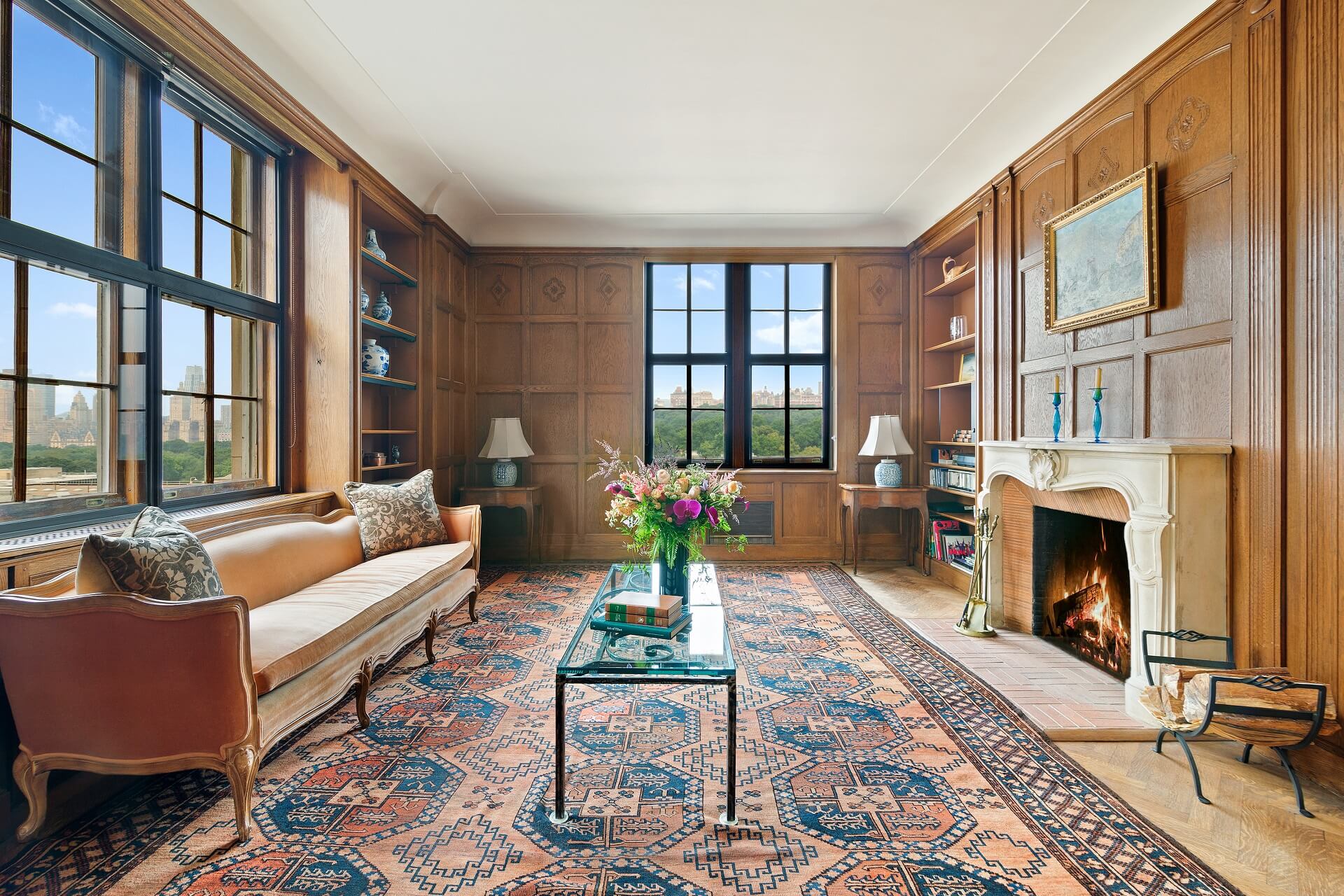
This splendid Upper East Side residence has a prized setting in one of Manhattan’s most coveted residential buildings, 1020 Fifth Avenue: a full-service, white-glove cooperative designed in 1925 by Warren & Wetmore (architects of New York’s Grand Central Terminal). The residence occupies the building’s entire 12th floor, offering breathtaking vistas of the Metropolitan Museum of Art, the fountains of David H. Koch Plaza, and the Central Park South skyline. A private elevator landing opens to an impressively scaled central gallery. The living spaces are grandly appointed and timelessly elegant—a testament to the Beaux Arts style. High ceilings and oversized windows lend an ambience of light and space. The expansive, south-facing living room has a high ceiling and herringbone oak floors and two oversized windows overlooking Central Park. It opens to a corner library with wood-panelled walls and the first of three wood-burning fireplaces. The dining room is perfect for entertaining on a grand scale and opens to a large chef’s kitchen equipped with top-of-the-line appliances. Three sumptuous en suite bedrooms are housed in a private wing off the central gallery. The main suite has a walk-in closet with dressing room, a wood-burning fireplace, and large windows onto 83rd Street and Fifth Avenue. Two east-facing bedrooms each have a bathroom and closet. A wet bar, powder room, and laundry facility are further appointments.
Château in Brittany, France
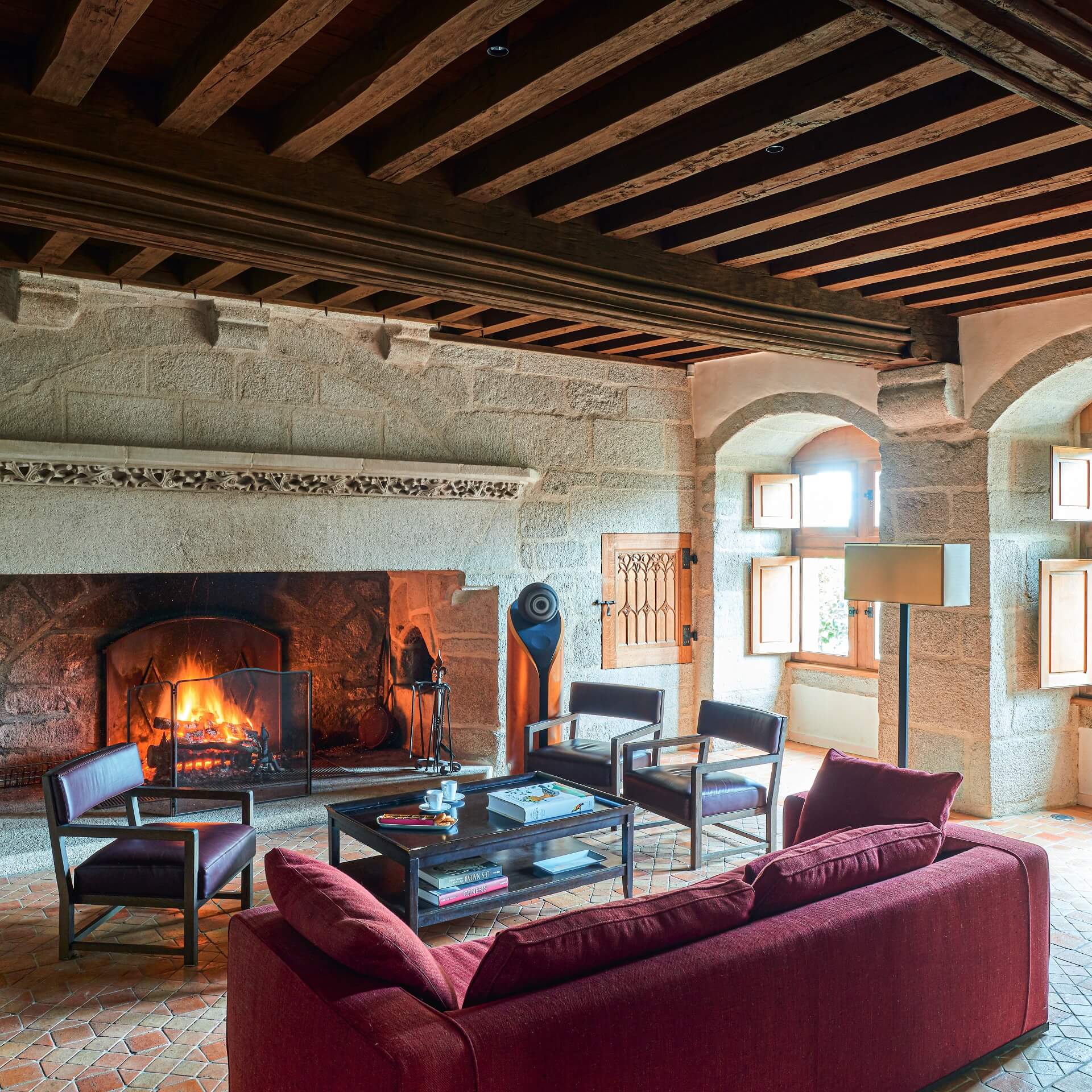
The magnificent gothic castle on 98.8 acres of wooded parkland along the River Aven in southern Brittany was built and developed from the 15th to the 18th centuries. An extensive restoration and renovation over the last 20 years has brought the castle, its ancillary structures and parklike grounds into the 21st century. During the restoration, the castle was carefully dismantled stone by stone by a crew of seven stonemasons. They created a granite quarry on the property to acquire new stone. The artisans’ contemporary touches nevertheless respect the structure’s antiquity. The castle’s innovatively updated interiors extend to nearly 25,000 square feet of expansive, airy living and entertaining space. Among the medieval features are the original solid-stone spiral staircase and a great room with a monumental limestone fireplace and beamed ceiling. Farther along are three offices, an elegant wood-paneled library, a contemporary formal dining room, and a dream kitchen by La Cornue. Several original buildings include the chapel, monk’s tower, honey shed, and flax drying shed. A boathouse, workshop, garage, caretaker’s house, employee’s lodge, and a large, detached guest house are modern additions, as are the natural granite swimming pool and themed gardens, which seamlessly blend into the medieval environs.
Stonescape in Deer Isle, Maine
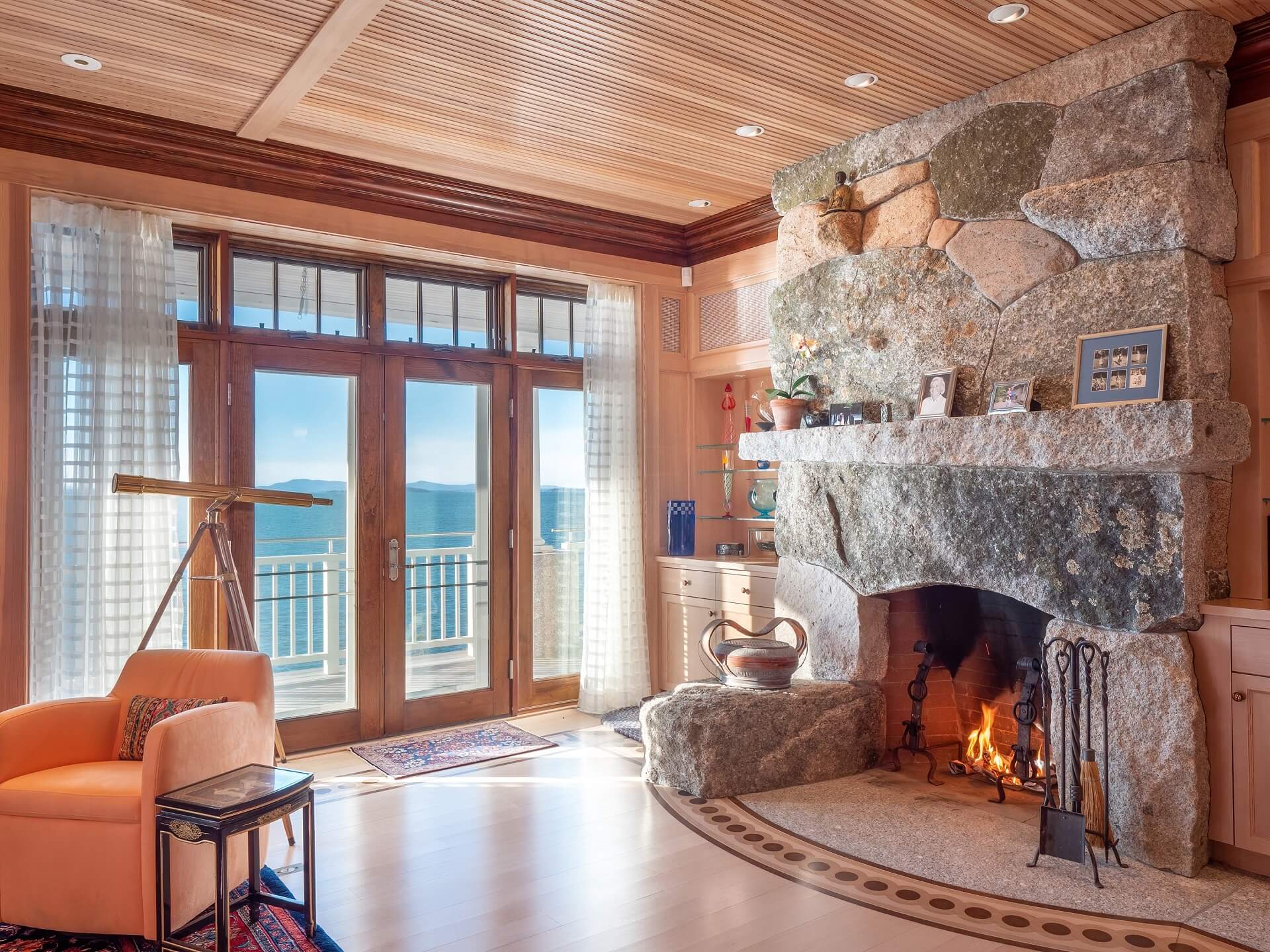
Stonescape is perched on the rocky coastline of Deer Isle, Maine, overlooking Penobscot Bay, the Camden Hills, and neighboring, spruce-clad islands. The home’s porte cochere, turrets, wide porches, beadboard wainscoting, coved ceilings, and cozy fireplaces are evocative of a classic shingle-style Maine cottage. At its heart, though, Stonescape is utterly contemporary: extensive decks and balconies, a modern kitchen, luxurious bathrooms, and a stone-paved terrace with hot tub, grill, and outdoor pizza oven are among its 21st century amenities. The residence is styled for four-season living and entertaining. The great room has a huge fireplace crafted from native granite. A cozy den and a light-filled family room are also warmed by fireplaces. The dining room has bow-style casement windows and opens to a spacious chef-friendly gourmet kitchen. A wood-paneled library and office are also on the main floor. A custom ironwork passenger elevator rises to the three en suite bedrooms on the second floor. Complementing the main house is a Shingle-style guest house with two bedrooms, two bathrooms, a full kitchen, fireplace, balcony and living space above a two-car garage. Stonescape’s private grounds extend to more than 10 acres, landscaped with native flora and colorful perennial plantings, and include 1,374 feet of shorefront on Penobscot Bay. Walking paths and moss trails throughout the property lead to neighboring Barred Island Preserve.
As Good As It Gets in Aspen, Colorado
This ultimately private, one-of-a-kind residence is a personal resort within walking distance of the downtown core and just four blocks from the Ajax gondola. At 20,000 square feet, a ski-in home of this scale can never be replicated in downtown Aspen. Completed in 2020, the property is appointed with the finest materials sourced from around the world and numerous technological innovations to enhance its premium location in the heart of Aspen. The design optimizes the space within, while capturing the dramatic mountain views beyond. Owner and designer Leathem Stearn, in conceptualizing this new home, took a unique approach in functional architectural design. He combined his 60 years of experience in fashion and aeronautical engineering with his background as a naval architect where design for ships and sailboats maximizes every cubic inch within. All-natural finishes include wood-paneled walls, vaulted ceilings and pillars, tiled floors, and marble. Four custom-made chandeliers adorn the interiors. A contemporary open fireplace anchors the grand living room and dining room. A third-level gallery and glass-walled suspended office overlook the oversized indoor pool and leisure area below, while a two-story cascading water wall adds a sense of calm. Seven bedrooms include two principal suites with vast glass doors. Two reflecting pools, on the home’s fourth level, double as skylights. A full spa, bowling alley, outdoor tennis complex, and five-car garage are among the resort amenities.
Contemporary Resort Villa in Son Vida, Mallorca, Spain
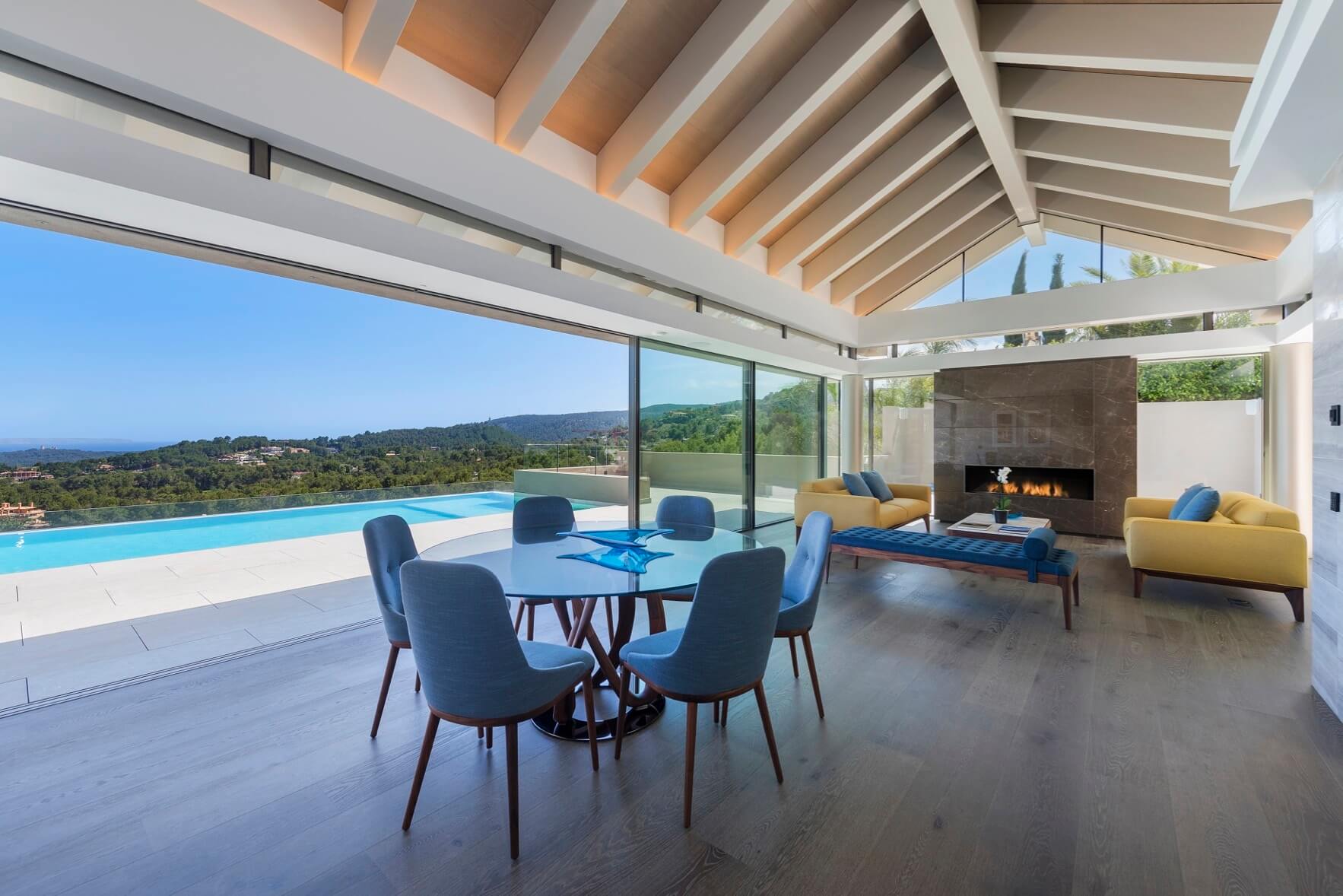
This sleek contemporary villa is in the exclusive Mallorca neighborhood of Son Vida. The 5,651-square-foot concrete and glass structure is built into the hillside to capture the panoramic vistas of the bay and the fairways of Golf Son Vida, the oldest golf course on the island. Large sliding doors on all three floors throughout the living spaces provide a seamless transition between the indoor and outdoor spaces. The main floor features a glass-enclosed reception room with an alluring bio-fuel fireplace. The space adjoins a formal dining area and a designer kitchen with breakfast bar. Pocket glass doors flow out to a “suspended” pool terrace with a waterfall and outdoor fireplace. The primary suite, with its spa-inspired bathroom, dressing room, and sea-view terrace, is also on the main level to take in the views. The lower two floors house six additional bedrooms, a media lounge with a cocktail bar, and a gym. Surrounding the home are terraced gardens shaded with palm trees.
Ipeak House in Caledon, Ontario, Canada
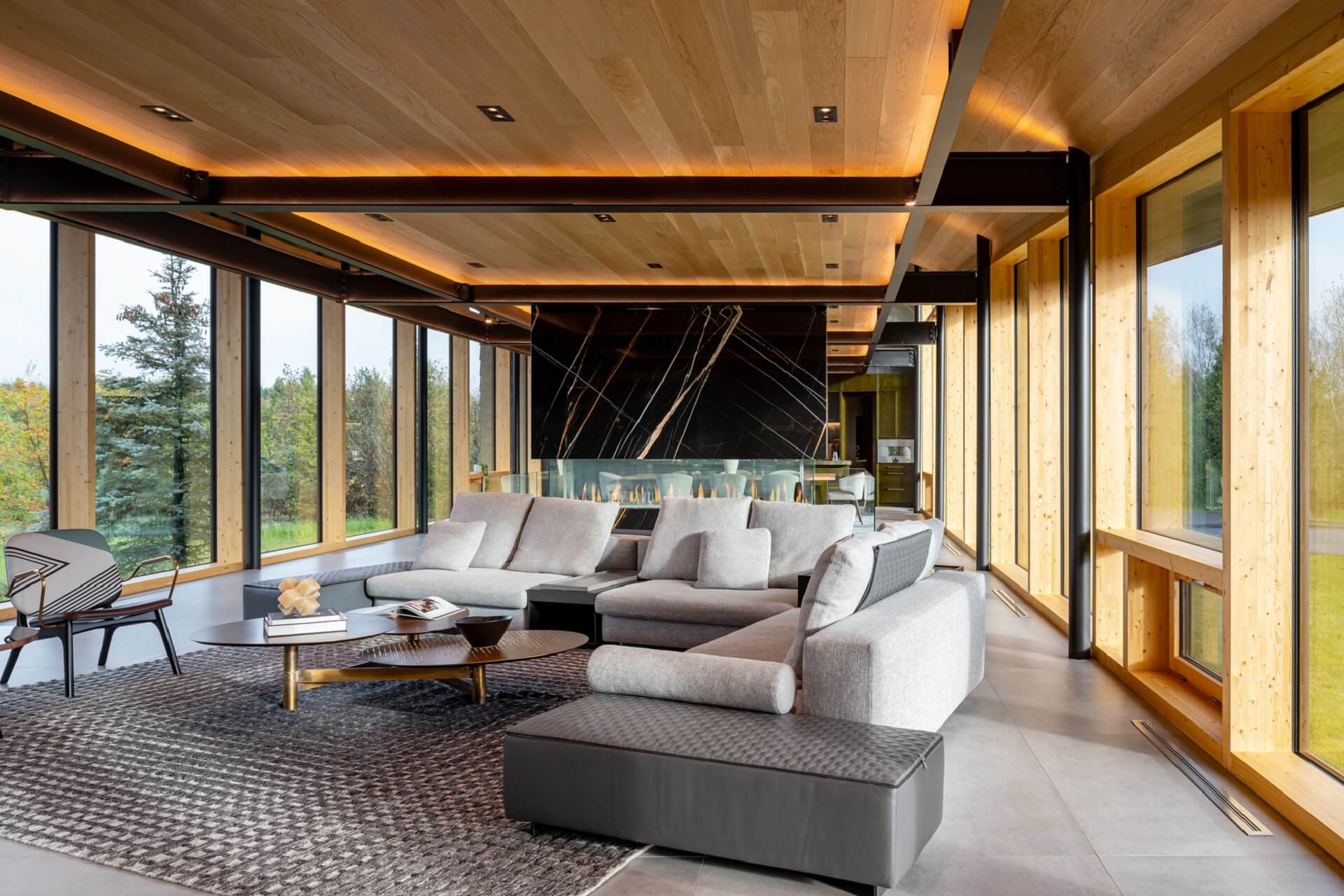
Ipeak House is a bold, exuberantly postmodern home in the Caledon countryside, just an hour from Toronto. Situated on just under 100 acres, composed of woodland, meadows, and ponds, the home is seamlessly integrated with the rugged Canadian landscape that envelops it. The asymmetric steel frame construction is clad in slate, which is mirrored on several interior walls. Wood ceilings and timber beams add warmth, while walls of glass and oversized windows bring in the light and the views of the great outdoors. The open-concept kitchen has vaulted ceilings, steel beams, professional-grade appliances, and a lounge with an elevated, open fireplace. The great room has a vast skylight and gas fireplace with a beautiful, polished granite surround. The two-story deck is another highlight, with its white oak tongue-and-groove ceiling and ipe wood floor. All rooms have scenic, treetop vistas, including four upstairs bedrooms with luxurious bathrooms adorned with natural stone finishes and a complementary color palette. A guest bedroom is on the lower level, a sleek entertainment and recreation space with a movie theater, gaming room, infrared sauna, and family room.
Galleria Costa in Ashigarashimo, Japan
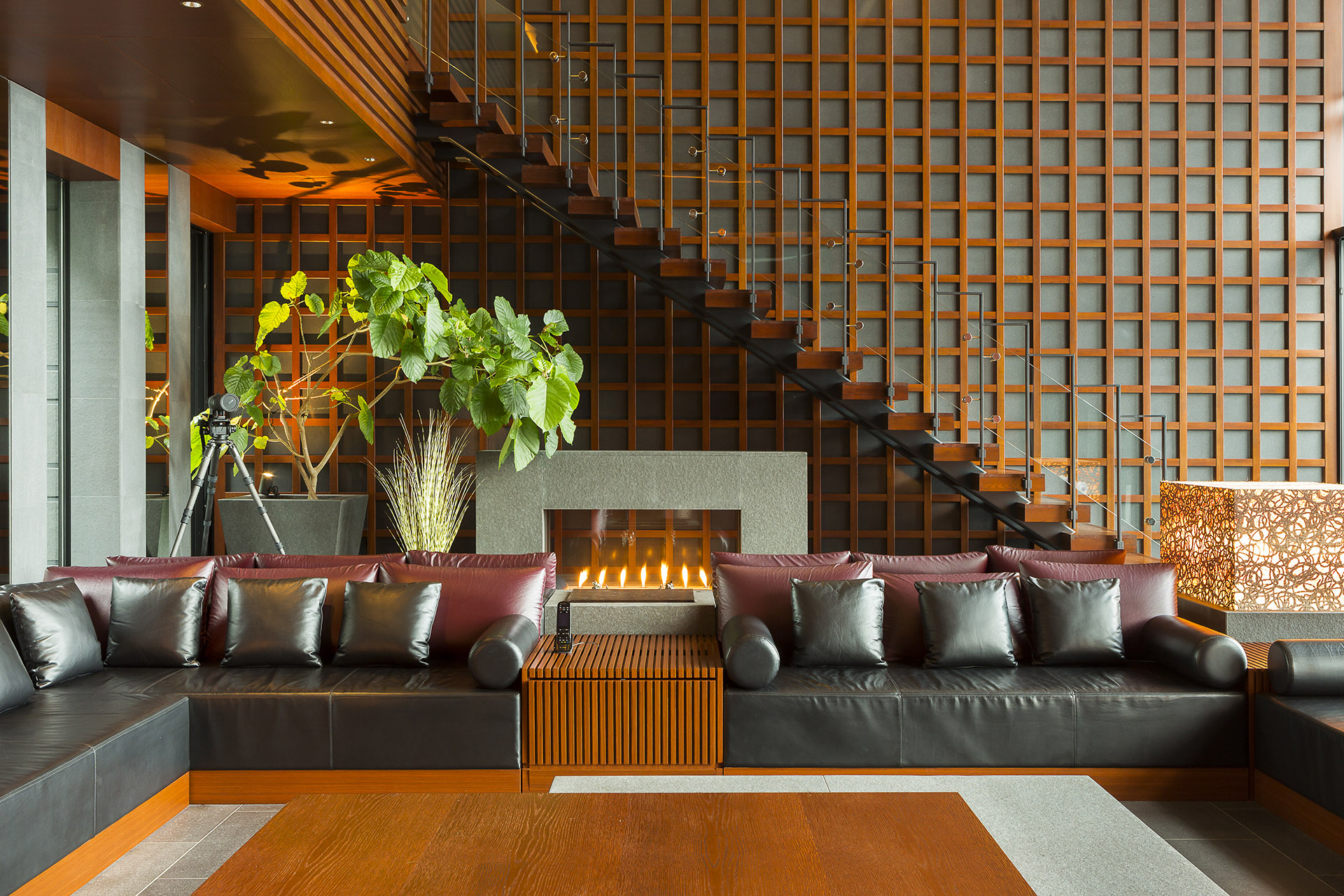
Sagami Bay on Japan’s majestic Manazuru Peninsula forms the backdrop to this 8.5-acre oceanfront estate in Ashigarashimo-Gun. The multi-level contemporary residence was designed in harmony with the sea. All rooms are ocean facing with unique interior décor. Vistas of Sagami Bay are the focal point of the grand living and dining rooms, many of which feature custom-designed hearths or firepits. The outdoor spaces include a pool and Rotenburo open-air hot spring baths with an infinity view of the ocean. A deck is ideal for alfresco entertaining. The estate has extensive amenities to entertain owner and guests. Tennis players will appreciate the pro tennis court, while golfers can practice their swing on the state-of-the-art golf simulator. There’s also a gym and wellness center with mist and stone saunas, Jacuzzi, and treatment room, and a home theater with karaoke system.